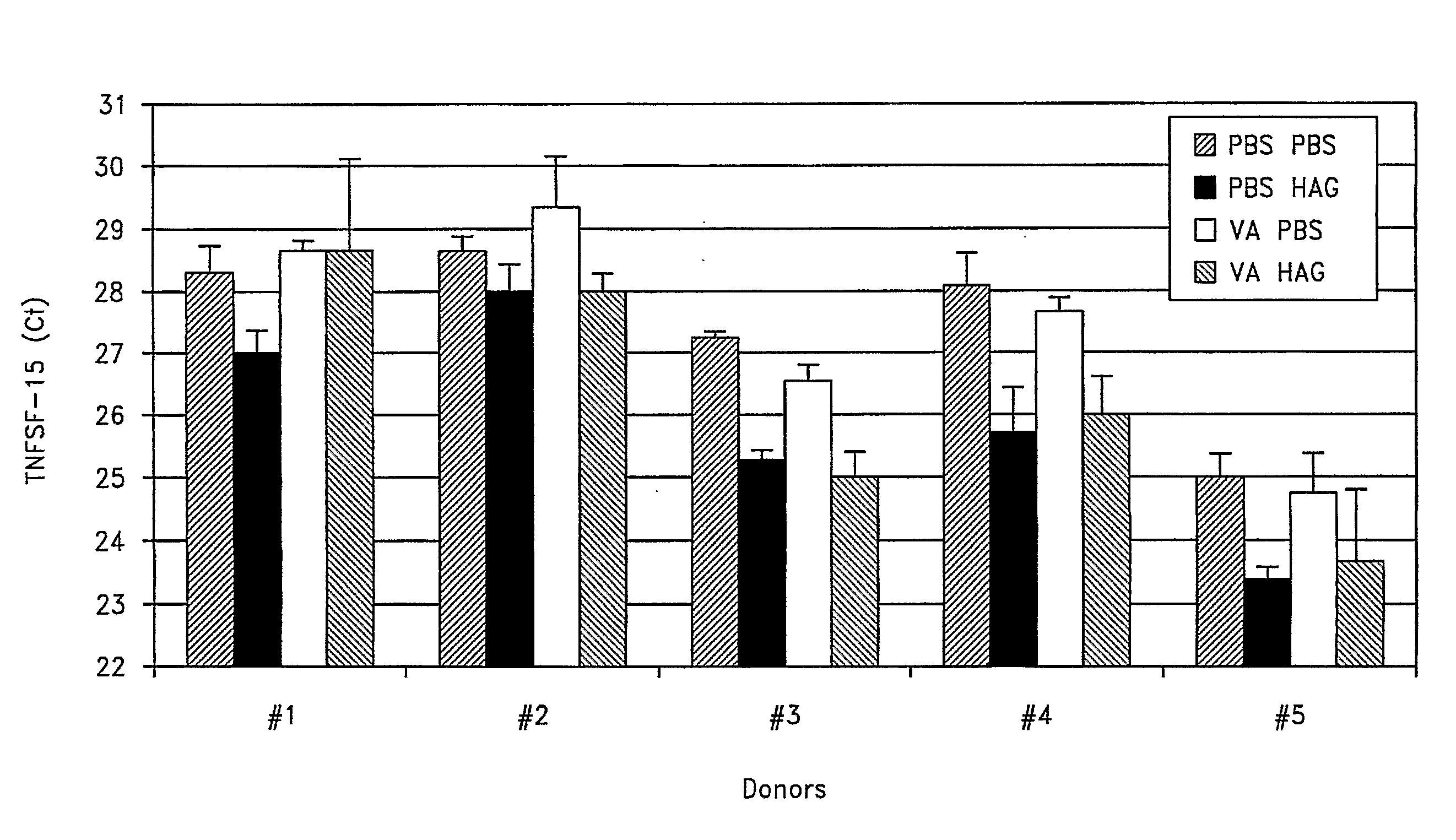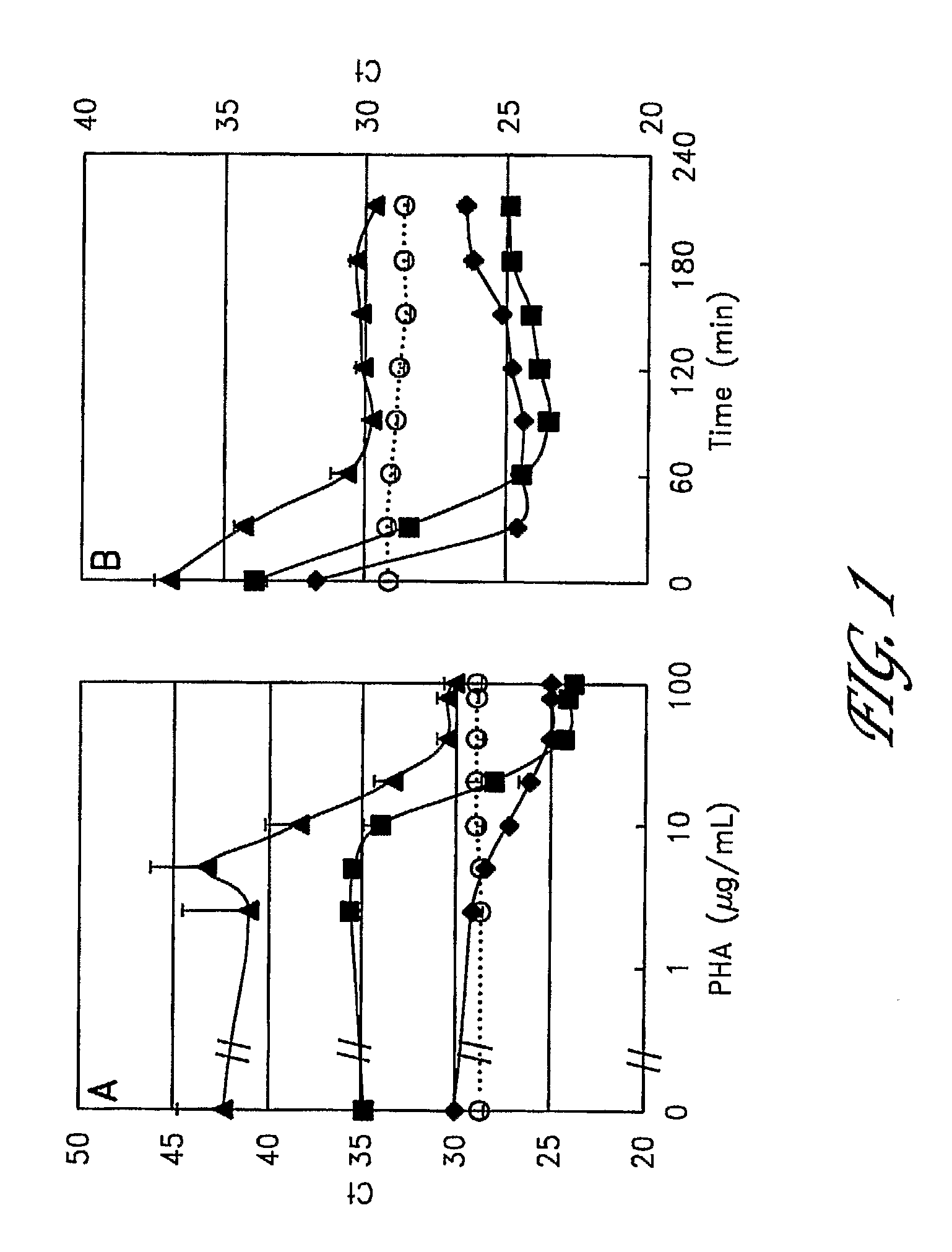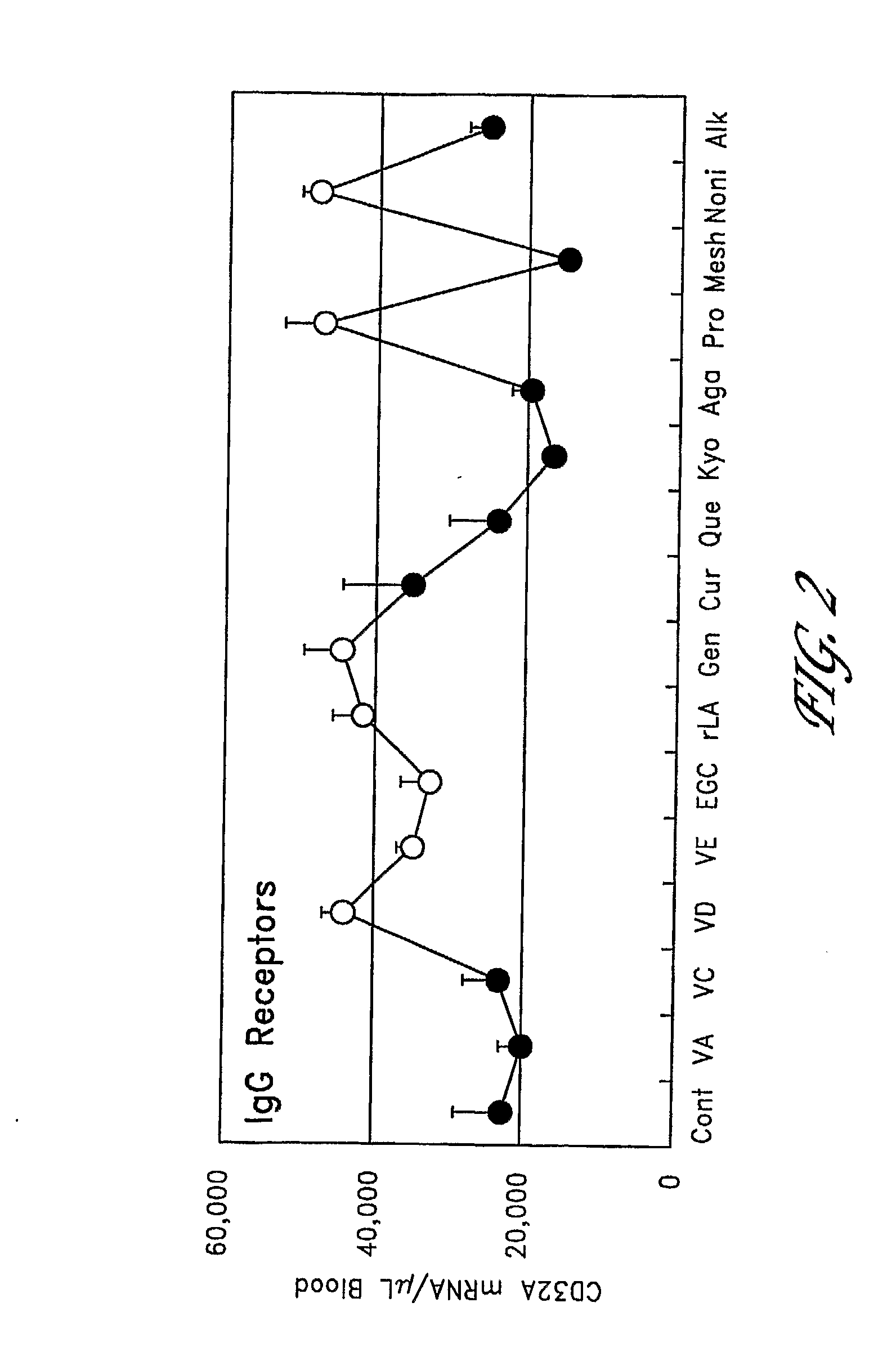Ex Vivo Gene Expression in Whole Blood as a Model of Assessment of Individual Variation to Dietary Supplements
a whole blood and gene expression technology, applied in the direction of heterocyclic compound active ingredients, plant/algae/fungi/lichens ingredients, instruments, etc., can solve the problems of inability to employ clinical studies, double-blind clinical trials are no longer able to identify those dietary components, genotyping or single nucleotide polymorphism analysis is only useful, etc., to identify the potential anti-cancer or anti-autoimmune disorder effectiveness of dietary components
- Summary
- Abstract
- Description
- Claims
- Application Information
AI Technical Summary
Benefits of technology
Problems solved by technology
Method used
Image
Examples
embodiment 1
[0030]In order to assess leukocyte function in as close as possible to physiological conditions, an embodiment of the method of the invention employs whole blood, without isolating specific leukocyte populations. As anticoagulant citrate dextrose solution and ethylenediaminetetraacetic acid chelate calcium, a critical component for many biological activities (see Eggesbo et al., “LPS induced release of IL-1 beta, IL-6, IL-8 and TNF-alpha in EDTA or heparin anticoagulated whole blood from persons with high or low levels of serum HDL,” Cytokine 1996; 8: 152-60), heparin was used as an anticoagulant in this embodiment. Since mRNA transcription is an upstream event of protein synthesis and subsequent biological activities, mRNA levels are employed in an embodiment of the present invention as an indication of biological activity associated with the protein encoded by the mRNA. An embodiment of the present invention employs a method of quantitating mRNA that allows the identification of c...
embodiment 2
[0037]In this embodiment of the method of the present invention, the expression of CD32A mRNA was assessed in the leukocytes of an individual. This mRNA encodes the IgG Fc receptor, and is related to antibody-dependent cell-mediated cytotoxicity (ADCC). Dietary components that increase CD32A mRNA levels would be expected to boost an individual's ADCC activity and thus provide direct anticancer activity. Alternatively, such dietary components could enhance the efficacy of recently developed expensive monoclonal antibody-based treatments (such as trastuzumab (Herceptin) or rituximab (Rituxan)) by simultaneously increasing IgG Fc receptor mRNA levels in circulating leukocytes. The method described above was employed in measuring the CD32A mRNA levels, with the exception that no stimulating agent such as phytohemagglutinin was employed. The primer sequences are shown in Table 2 above.
[0038]The dietary supplements employed were: vitamin A (“VA”; 100 nmol / L, final concentration;), vitamin...
embodiment 3
[0041]In this embodiment, heparinized whole blood of four individuals was pre-incubated with various dietary supplements at 37° C. for 1-2 hours (at the same blood concentrations as in Embodiment 2), then stimulated with 1 Gy radiation. The blood was then incubated at 37° C. for 2 hours. The level of p21 mRNA was then assessed using the method described in Embodiment 1. The primer sequences are given in Table 2. p21 mRNA was selected as an apoptosis marker that would indicate the effect of each dietary component on the DNA damage response. As an alternative to p21, PUMA (p53 upregulated modulator of apoptosis) mRNA could be quantitated.
[0042]The results are shown in FIG. 3. In the Figure, open circles indicate values obtained without radiation stimulus, while closed circles indicate that radiation was used. Each symbol is the mean±S.D. from triplicate aliquots of 50 mL heparinized whole blood.
[0043]As shown in the figure, the individual responses to the dietary components varied wid...
PUM
| Property | Measurement | Unit |
|---|---|---|
| concentration | aaaaa | aaaaa |
| pH | aaaaa | aaaaa |
| pH | aaaaa | aaaaa |
Abstract
Description
Claims
Application Information
 Login to View More
Login to View More - R&D
- Intellectual Property
- Life Sciences
- Materials
- Tech Scout
- Unparalleled Data Quality
- Higher Quality Content
- 60% Fewer Hallucinations
Browse by: Latest US Patents, China's latest patents, Technical Efficacy Thesaurus, Application Domain, Technology Topic, Popular Technical Reports.
© 2025 PatSnap. All rights reserved.Legal|Privacy policy|Modern Slavery Act Transparency Statement|Sitemap|About US| Contact US: help@patsnap.com



